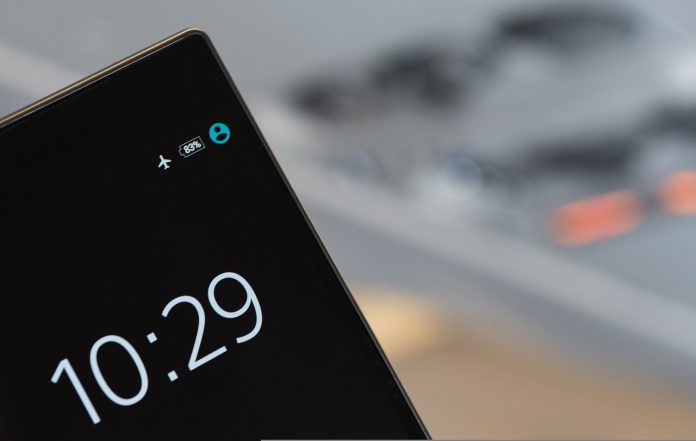When is the real reason to put your cell phone in airplane mode?
- September 24, 2022
- 0
Photo: Rudy and Peter Leaps on Pixabay We all know by heart: “Please make sure your seats are upright, trays down, blinds open, laptops placed in overhead bins,
Photo: Rudy and Peter Leaps on Pixabay We all know by heart: “Please make sure your seats are upright, trays down, blinds open, laptops placed in overhead bins,


We all know by heart: “Please make sure your seats are upright, trays down, blinds open, laptops placed in overhead bins, and electronics in airplane mode.”
Frankly, the first four are reasonable, right? The shutters need to be open so that we can see if there is an emergency such as a fire. The folding tables must be folded and the seats must be in an upright position so that we can get out of the seat quickly when necessary. Laptops can turn into bullets in an emergency, as the pockets in the seatbacks aren’t strong enough to hold them.
As for cell phones, they have to be in airplane mode so Why? interfering with the flight apparatus, right? Well, it all depends on who we ask.
Air navigation and communications have been based on radio systems optimized to minimize interference since the 1920s. The digital technology used today is much more advanced than the old analog technologies used up to 60 years ago.
Research has shown that personal electronic devices can create what is known as electromagnetic interference by emitting signals in the same frequency band as aircraft communication and navigation systems.
But in 1992, the US Federal Aviation Authority and Boeing, in an independent study, investigated whether the use of electronic devices causes interference in aircraft and found no problems with computers or other personal electronic devices during non-critical flight stages (takeoffs and landings are considered critical stages).
The US Federal Communications Commission has decided to create separate frequencies for different uses – mobile telephony, navigation, and aircraft communications – so they don’t interfere with each other. Governments around the world have developed the same strategies and policies to prevent interference. In the European Union, active electronic devices have been allowed since 2014.
So why did the aviation industry continue to ban cell phone use while these global regulations were in place? One of the problems lies in something unexpected: interference terrestrial.
Wireless networks are interconnected by a series of towers that can become overloaded if passengers flying over these networks use their phones at the same time. The number of passengers flying in 2021 was more than 2.2 billion (half the number of passengers in 2019).
On the other hand, a new wireless communication standard has been adopted in recent years. Existing 5G networks, favored for their higher data transfer rates, have caused concern in the aviation industry.
Radio frequencies have limited bandwidth, but attempts are still being made to add more devices. The airline industry states that the 5G wireless network bandwidth spectrum is very close to the bandwidth spectrum reserved for aviation, which can cause interference with the navigation systems that assist the aircraft to land.
Airport operators in Australia and the United States have expressed concerns about aviation security regarding the rollout of 5G, although the European Union appears to be rolling out smoothly. In any case, it seems prudent to limit cell phone use on airplanes while 5G related issues are resolved.
Most airlines today offer free or paid Wi-Fi services to their customers. With new Wi-Fi technologies, passengers could theoretically use their mobile phones to make video calls with friends or customers during the flight.
I spoke with a flight attendant on a trip recently and asked her opinion on using the phone during a flight. He said it would be inconvenient for cabin crew to have to wait for passengers to finish their call to ask if they would like something to drink or eat. On a plane with more than 200 passengers, if everyone is on the phone, it will take much longer to complete the service on the plane.
For me, the issue of using an airplane phone is more about the social experience of having 200+ people talking at the same time on an airplane. In an age where disruptive passenger behavior, including aggression, is becoming more common, in-flight phone use can be another trigger that completely changes the flight experience.
Disruptive behavior can take many forms, from failure to comply with safety requirements such as not wearing a seat belt, to verbal arguments with other passengers and cabin crew, to physical arguments with passengers and crew cabin, often described as: air rage (air aggression).
As a result, in-flight phone use does not currently affect the operation of the aircraft. However, cabin crews prefer not to delay in providing in-flight services to all passengers: there are many people to take care of.
However, 5G technology affects the radio bandwidth of aircraft navigation systems; We need more research to understand how 5G interferes with aircraft navigation during landing. When we talk about the two most critical phases of flight, let’s remember that takeoffs are optional, but landings are mandatory.![]()
Doug Drury, professor/Head of Aviation, CQ University Australia
This article was originally published on The Conversation. Read the original.
Source: El Nacional
Alice Smith is a seasoned journalist and writer for Div Bracket. She has a keen sense of what’s important and is always on top of the latest trends. Alice provides in-depth coverage of the most talked-about news stories, delivering insightful and thought-provoking articles that keep her readers informed and engaged.